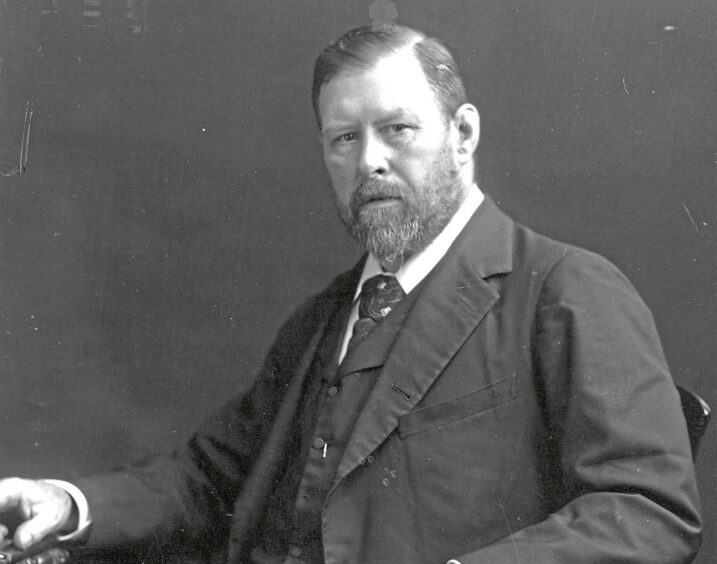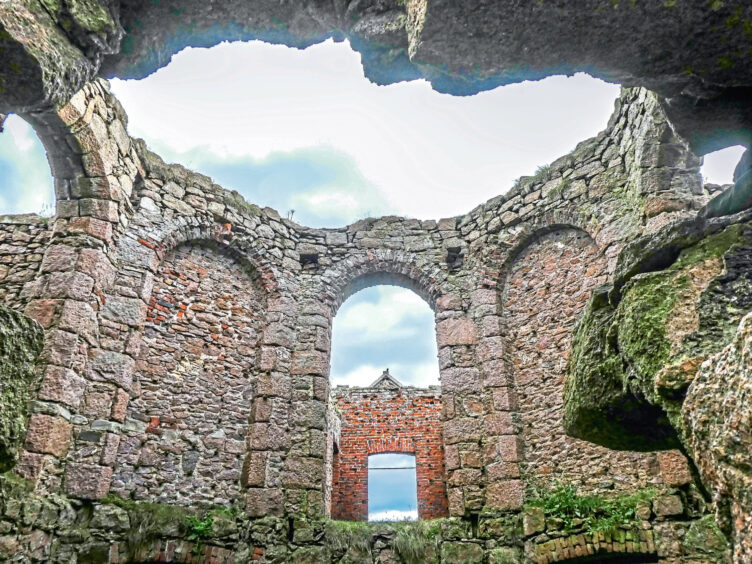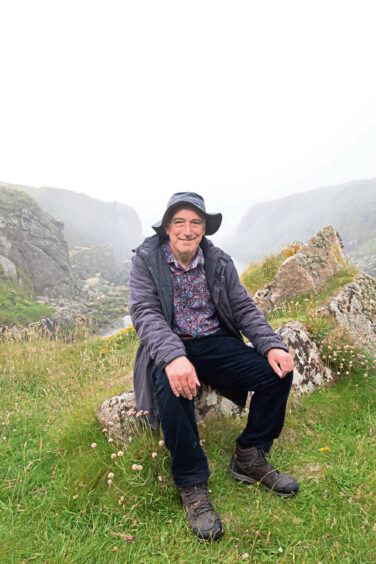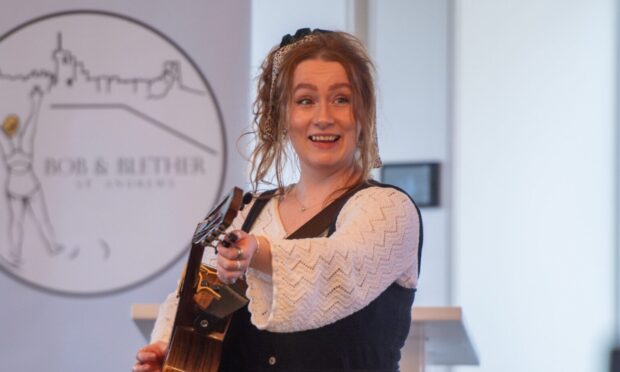To mark the 125th anniversary of Dracula, Gayle meets with Bram Stoker expert Mike Shepherd for a tour of the novelist’s north-east haunts.
A tall figure in a black cape and broad-brimmed hat crouched on a rock like a giant bat staring out at the North Sea.
This was Bram Stoker, creator of the world’s most infamous vampire, Dracula.
The Irish author was a familiar sight in and around the Aberdeenshire village of Cruden Bay – or Port Erroll as it was known then – returning for his monthly summer holiday every year between 1892 and 1910.
It was here that he became gripped by the demon of inspiration, entering into the mind of his vampiric creation.
His wife and son would steer clear when he was “acting up”, storming around the cliffs, marching up and down the beach, arms flailing and muttering to himself.
As well as working on Dracula, Stoker set two other novels in the village, The Mystery of the Sea (1902) and The Watter’s Mou’ (1895).
Stoker expert
I’m excited to meet resident Mike Shepherd for a tour of Stoker haunts – locations from which he drew literary inspiration or set stories.
If anyone’s a Stoker expert, Mike is. He’s written books about the Scottish origins of Dracula and is delighted to show me around.
We set off along the jagged coastline towards Slains Castle, pausing to look at awe-inspiring views of waves crashing on rocks below. It’s easy to imagine Stoker being blown away.
Inspiration
Inside the ruined castle, Mike leads me into a strange windowless octagonal chamber, said to be the inspiration for a room in Stoker’s fictional Castle Dracula.
“Early in Dracula, Jonathan Harker meets Dracula for the first time and is escorted into an octagonal room,” says Mike.
“The octagonal room at Slains is identical, once serving as a reception hall with doors leading to the rest of the castle.
“Another telling aspect is that Harker reaches Castle Dracula to find no door knocker or bell.
“I’ve got a photo of Slains Castle and there’s no bell or door knocker. There’s also the fact the room was said to have been lit by a ‘single lamp’. There’s a photo showing a single lamp hanging right here in this chamber.”
Mike believes it’s likely that Stoker, who mixed with the elite of London society via his theatre work, had been invited to visit Slains by the Earl of Erroll and used the octagonal room as the template for Dracula’s entrance hall.
Most important connection
He also believes that “the most important connection” between Dracula and the area isn’t Slains Castle – it’s Cruden Bay beach.
“It figures more prominently in the writing of Dracula, in my opinion. Stoker spent most of his time marching up and down the beach, or sitting on isolated rocks on the seashore while writing.
“He was a tall guy with a very distinctive walk – as a student he won prizes for speed walking – and he’d march quickly with his hands behind his back, his head bowed.
“He sometimes wore a cape, a broad-brimmed hat or a beret. He’d squat down on a rock on the sand, like a great bat, and gaze out at sea, or up at the castle, deep in thought.
“As he wrote in The Mystery of the Sea, he thought the beach resembled a mouth with the rocky headland at each end like teeth. He also mentioned that some rocks looked like fangs.”
Stoker also liked to cycle, says Mike, and he was seen zipping round the village on a bike boasting a hammock instead of a saddle – popular at the time and more comfortable when it came to negotiating bumpy country tracks.
Atmospheric
While staying at the Kilmarnock Arms, Stoker wrote the early chapters of Dracula. No doubt the weather would have inspired him – haar rolling past his bay window would have cast a spooky air, and he could well have imagined Dracula himself arriving in a cloak of mist.
As he wrote in The Mystery of the Sea, he thought the beach resembled a mouth with the rocky headland at each end like teeth. He also mentioned that some rocks looked like fangs.”
MIKE SHEPHERD
The author also rented Crooked Lum Cottage in Whinnyfold, and Hilton Cottage, just up the brae from the hotel.
The latter’s garden boasted a partial vista of Slains Castle and he’d sit writing at a small table with the majestic stately home in sight.
Another thing which struck Stoker about Cruden Bay was the discovery of an “ambience of the supernatural”, says Mike.
“Locals were deeply religious but they also had superstitions and traditions that had nothing to do with Christianity.
“The minister, Reverend Drummond, was aggrieved because Stoker didn’t consult him and referred to him as ‘convivial enough but too interested in funerals’.”
Tragic tale
Along the coast, we reach a deep gorge known as ‘The Watter’s Mou’, literally ‘water’s mouth’ – inspiration for Stoker’s novella. The tragic tale tells of smuggling, romance, and death, with a girl drowning at the treacherous spot.
“It’s a bit of a melodrama,” says Mike, pausing to read an excerpt which references a “white cluster of rocks” that “looked like a ghostly mouth open to swallow whatever might come in touch”. Evocative stuff.
Stoker’s special place
So why Cruden Bay? Mike says Stoker consulted geological maps and concluded that his “special place” must be between Peterhead and Aberdeen.
“In 1892 he took the train from London to Peterhead and embarked on a search of the coast on foot. He got as far as Cruden Bay and fell in love with it.”
What’s also little-known is that Stoker injected the Doric dialect into his books. “It’s incredible, really!” enthuses Mike.
“There’s a curious bit in Dracula where Mina and Lucy are talking to a fisherman and there’s a phrase of Doric: ‘I wouldn’t fash masel’.
“It’s a phrase almost exclusively used in Aberdeenshire so I think it was Stoker’s humorous nod to the area.
“A lot of people think of him as this ghoulish guy with dark thoughts but in reality he was a very jolly Irishman.”
- When Brave Men Shudder: The Scottish Origins of Dracula by Mike Shepherd is available here on Amazon.
- In May, along with Stoker’s great-grandnephew Dacre Stoker, Mike unveiled a plaque at the Kilmarnock Arms containing a QR code linking to a walking guide detailing places associated with the author in Cruden Bay.



















Conversation